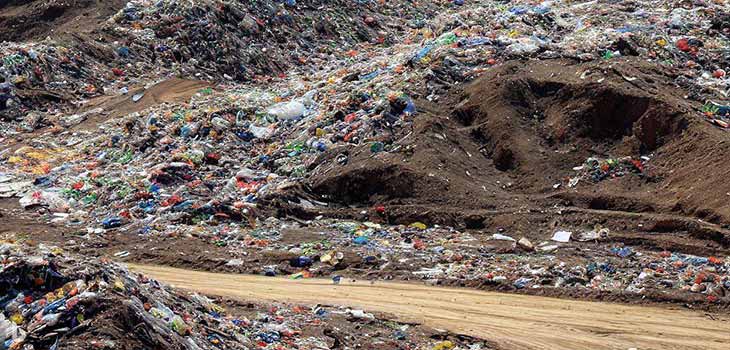Landfills play a significant role in waste disposal, but they also pose substantial environmental, health, and economic risks that deserve careful consideration.
The impact of landfills on the surrounding ecosystem and human communities is far-reaching, highlighting the importance of sustainable waste management practices.
1. Groundwater Contamination
One of the most concerning risks associated with landfills is the potential for groundwater contamination. As waste breaks down over time, it releases harmful chemicals and toxins that can infiltrate the surrounding soil and reach groundwater supplies.
This contamination can have severe implications for local communities that rely on these sources for drinking water, potentially leading to health issues and water supply challenges.
2. Air Pollution and Climate Impact
The decomposition of organic waste within landfills produces methane gas, a potent greenhouse gas that contributes to global warming. Methane emissions from landfills can have a significant impact on climate change due to its higher heat-trapping capability compared to carbon dioxide.
Additionally, landfills release volatile organic compounds (VOCs) and hazardous air pollutants, contributing to poor air quality and posing health risks for those living nearby.
3. Degradation of Soil and Habitat
The accumulation of waste in landfills disrupts natural soil structures and compositions. As a result, soil fertility decreases, affecting its ability to support plant growth and sustain ecosystems.
This degradation can have cascading effects on local habitats and biodiversity, potentially leading to the decline of plant and animal species that rely on these environments.
4. Disturbance to Wildlife and Disease Transmission
Landfills often attract scavengers such as rats and birds, altering local wildlife dynamics. These scavengers exploit the readily available food sources in landfills, potentially leading to imbalances in local ecosystems.
Moreover, the presence of these animals near human settlements can increase the risk of disease transmission, posing health threats to both wildlife and people.
5. Aesthetic Disruption and Impact on Quality of Life
The unsightly appearance and foul odors associated with landfills can significantly impact the quality of life for nearby residents. The visual blight and unpleasant smells can cause distress among communities, and property values may suffer as a result of the unattractive surroundings.
6. Health Risks
The release of hazardous chemicals, pathogens, and toxins from landfills can lead to a range of health risks. Those living or working near landfills may experience respiratory problems, skin conditions, and other health complications. Furthermore, improper waste management practices can have long-term consequences that extend far beyond the immediate vicinity of the landfill.
7. Fire Hazard and Emergency Situations
Landfills, particularly those with significant methane buildup, are prone to fires that can release toxic smoke, contribute to air pollution, and pose challenges for firefighting efforts. These fires not only harm the environment but also endanger nearby communities and emergency responders.
8. Impact on Infrastructure and Land Use
Landfills often occupy large areas of land, potentially infringing on spaces that could have been used for more productive or environmentally friendly purposes. Additionally, landfills located in areas prone to flooding or landslides can face infrastructure damage, leading to waste spillage and exacerbating environmental risks.
9. Long-Term Maintenance and Financial Burden
Even after a landfill is closed, ongoing monitoring and maintenance are required to prevent continued environmental impact. This creates a long-term financial burden for communities, necessitating resources for post-closure care and management.
10. Food Chain Contamination
Toxic substances from landfills can find their way into the soil and subsequently be taken up by plants. This contamination can enter the food chain, potentially affecting the safety of crops and livestock consumed by humans.
11. Loss of Natural Habitat and Biodiversity
The large space requirements of landfills can lead to the destruction of natural habitats, resulting in a loss of biodiversity and disruptions to ecosystems. This loss can have far-reaching consequences for local flora and fauna.
12. Legal and Regulatory Challenges
Landfills often require stringent regulations and monitoring to mitigate risks adequately. Non-compliance with these regulations can result in legal challenges, further highlighting the complexities of managing these sites.
Mitigating the Risks
To address these risks, a shift towards sustainable waste management practices is imperative. Recycling, composting, and waste reduction should take precedence over landfill disposal.
Perth (Australia) is at the forefront of this shift. They are pioneering strategies like construction waste recycling and advanced Class 1 landfills, emphasizing sustainability and economic growth.
Proper site selection, engineering design, and ongoing monitoring are essential to minimize the negative impacts of landfills. Long-term planning and financial provisions for post-closure maintenance are necessary to ensure that the environmental consequences of landfills are effectively managed.
Landfills present a host of environmental, health, and economic risks that cannot be ignored. While they remain a part of waste management systems, the focus should be on reducing waste generation, increasing recycling and composting efforts, and adopting sustainable waste disposal practices.
By acknowledging and addressing these risks, we can work towards minimizing the negative impacts of landfills on our environment, health, and future generations.
Reference:
